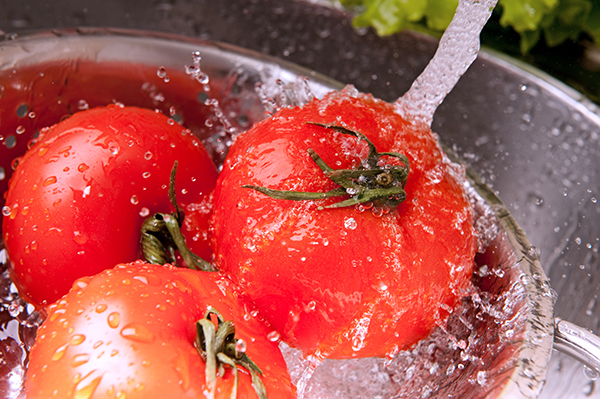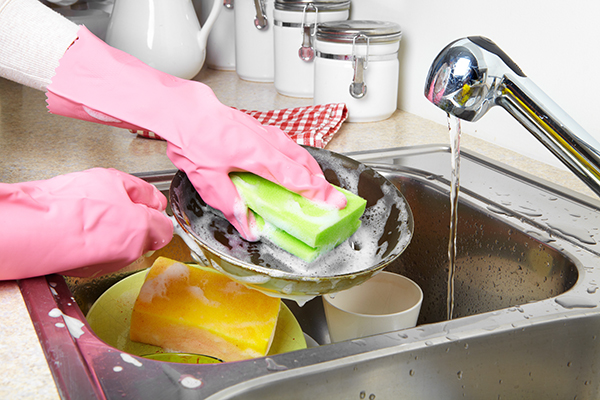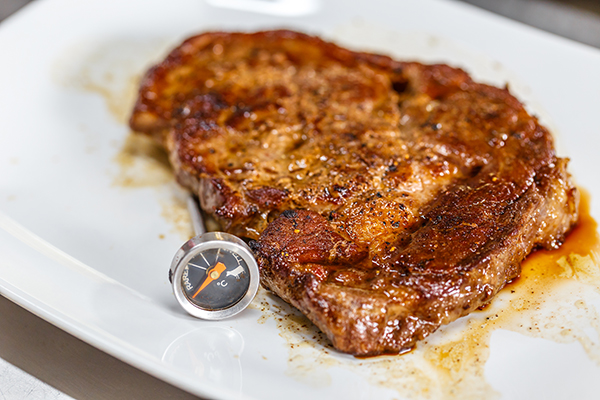Time and Temperature: Why 41°F to 135°F?
In one of my last blogs, I mentioned the temperature danger zone, or TDZ, as those in foodservice often refer to it. Learning the TDZ is almost a rite of passage for any new employee. Most could recite it in their sleep: “41°F and 135°F, the zone where bacteria multiply quickly.” In the foodservice environment, the TDZ isn’t just a best practice; it’s a critical defense against foodborne illness. Failing to manage time and temperature properly can lead to serious health risks, liability, and damage to the reputation of your brand.
The FDA Food Model Code sets strict guidelines: cold foods must be held at 41°F or below, and hot foods at 135°F or above. Any food that remains in the TDZ for more than 4 hours cumulatively must be discarded.
Early in my days in the industry, when I was just a teenager getting my first job, I was taught about the TDZ. What we, or at least I, didn’t understand back then was just how difficult it is to keep food out of this dreaded TDZ. For example, I don’t know if we (my fellow employees and I) fully appreciated the cooling curve for products such as soups and gravies. We would batch cook most of our soups, cool them down, and then reheat them for later service. I vividly remember being trained to take the soup off the steam-jacketed kettle at the end of the cooking process, divide the soup into two-gallon Cambro containers, and leave the lid slightly ajar so the initial heat could escape, and placing them on the counter (not in the cooler) for a half hour or so for initial cooling. After all, we didn’t want to warm up the cooler. Then, after a half hour or so, I was trained to place the product in the cooler with the lid covering the product tightly and let it cool. I know practices have changed at that operation, but back then, we thought the soup would be just fine! Now, we know that the two gallons of soup would never cool within current food code guidelines and would be within the TDA for far too long.
What I find when I conduct employee training is that most employees appreciate the TDZ and can recite it like the Pledge of Allegiance, but they really don’t understand it. I mean, truly grasp why that range was established and codified.
To fully understand the TDA, it helps to know a bit about food safety history. Although President Lincoln established the United States Department of Agriculture and the Division of Chemistry (which later became the Food and Drug Administration), public health officials really became serious about food safety in the early 1900s with the passing of the Pure Food and Drug Act. The Act was passed, in part, because of the public outcry following the publication of The Jungle by Upton Sinclair.
In the 1940s and 1950s, increased attention to military food safety intensified during World War II and the growth of industrial food production. These developments led to increased scrutiny of food handling, including time and temperature controls.
Then, in the late 1950s and early 1960s, we began to see food codes mentioning temperature criteria, which at that time were identified as either 40°F to 140°F, 45°F to 140°F, or 40°F to 150°F, depending on the source that you reviewed. These early references laid the groundwork for the standardized temperature danger zone we recognize today.
…If you have been in the industry for a while, you might recall the old TDZ to be 40°F to 140°F, which was always easily memorable in my mind. So why the change to the current 41°F to 135°F? Well, it wasn’t arbitrary…
First, it is important to understand that the food code is a mix of science, feasibility, and usability. The code document has a tough job; it must take the best of what we know about science, epidemiology, and technology; understand what is achievable in real kitchens with equipment limitations, labor constraints, and operational complexity; and make it clear enough that a foodservice manager can understand it and a regulatory official can enforce.
What was found in the scientific community about the TDA was that most common foodborne pathogens (like Salmonella, E. coli, and Listeria) grow most rapidly between 41°F and 135°F. The difference between 135°F and 140°F was not significant in the overall growth of microorganisms. Conversely, at the cold end, pathogen growth is not much different at 41°F versus the previous 40°F.
From an operator’s perspective, commercial refrigerators were more reliably able to maintain 41°F than exactly 40°F. Thus, it is easier for facilities to consistently meet and monitor 41°F. Similarly, hot-holding equipment like steam tables often stabilizes at a holding temperature of 135°F, whereas 140°F is more difficult to achieve.
Thus, the adjustment to the TDA we know today was made because of increased knowledge of pathogen growth, while trying to make the code more practical for foodservice operators to comply with, while not compromising public health.
Understanding and respecting the TDZ is one of the most important responsibilities in foodservice. Make temperature control a daily habit, build a culture of food safety, and invest in the right tools and training to ensure that your operation stays safe, compliant, and trusted. Risk Nothing.
READ MORE POSTS
Welcome to National Food Safety Education Month!
In September of each year, we not only have the opportunity to celebrate Labor Day, but we also welcome National Food Safety Education Month! It is this time of the year when it is important to remember that Foodborne illnesses are still a major concern in the United States, although I am guessing many Americans don’t think about the safety of the food they eat as they go throughout their daily lives. The statistics show one in every six Americans will suffer from a foodborne illness each year, for a total of about 48 million cases each year.
Protecting Fresh Produce Post-Harvest, Integral to Safe Food
During the height of the summer, at least in the Midwest, farmers markets are in full swing and fresh produce is plentiful. Every backyard gardener is reaping the benefits of their work, with bountiful harvests of tomatoes and cucumbers. Everyone seems to have a neighbor who is trying to pawn off his or her over-production of cucumbers or summer squash during this time of year. When picking up that produce at the farmer’s market or from your neighbor down the street, have you ever given any thought to the microbial safety of it? Honestly, even in my position, it certainly is NOT the first thing that comes to my mind. But, earlier this month, I came across a news story out of Wisconsin discussing a Salmonella outbreak associated with shelled peas sold at a local farmers market. Who would have thought shelled peas would be impacted? The story noted, and it served as a great reminder, that most outbreaks associated with Salmonella in produce are due to mistakes made in handling or transportation of produce after harvesting.
Properly Cleaning and Sanitizing: The Right Chemical Mix to Maintain Ultimate Effectiveness
A few weeks ago, my family and I had the pleasure of setting sail on a cruise vacation. It is truly one of the only ways that I find that I am able to unplug from work and relax for a small spell. However, as I walked around the ship in our post-COVID world, I couldn’t help but admire all the extra cleaning steps the staff were undertaking to keep us all as safe as possible while in the middle of the ocean with 3,000 other vacationers. All of this cleaning and sanitizing had me thinking about how we each clean and sanitize our own operations and which chemicals we chose to use.
Proper Cooking Temperature: A Basic Food Safety Measure
Each summer, we see an increase in the incidence of foodborne illnesses. Perhaps this is because of the warmer temperatures making temperature control for Time/Temperature Control for Safety (TCS) food more difficult or perhaps it is the increased amount of people who are barbequing this time of year – it is National Picnic Month, after all!










